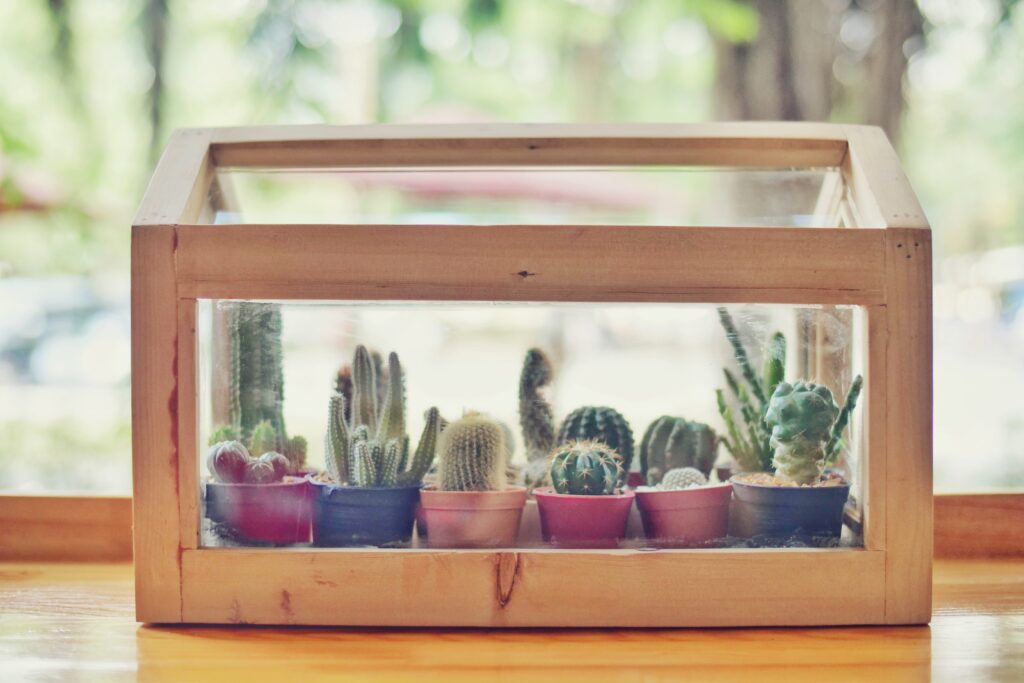Incorporating multiple terrariums into your home décor creates stunning visual interest while bringing the tranquility of nature indoors. Strategic terrarium placement transforms ordinary spaces into extraordinary environments, elevating your interior design with living art. This guide will help you maximize the aesthetic impact of your glass gardens while ensuring optimal growing conditions.
Strategic Terrarium Placement for Different Home Areas
Where you position your terrariums significantly affects both their visual impact and plant health. Each area of your home offers unique opportunities for terrarium display.
Living Room Terrarium Arrangements
- Place larger statement terrariums on coffee tables as conversation pieces
- Create multi-level displays on bookshelves with terrariums of varying heights
- Consider wall-mounted terrariums for unexpected visual interest
- Use terrariums to add life to media centers or entertainment areas
Bedroom Plant Decor Ideas
- Position smaller terrariums on bedside tables for a calming presence
- Hang suspended glass orbs near windows but away from direct drafts
- Create an accent collection on a dresser or vanity
- Consider terrariums with low-light plants for rooms with minimal sunlight
Kitchen and Dining Areas
- Herb terrariums bring both functionality and beauty to kitchen counters
- Centerpiece terrariums on dining tables create elegant natural focal points
- Windowsill arrangements maximize light for plant health
- Consider moisture-loving plants in bathroom terrariums
Creating Visual Harmony with Multiple Terrariums
The key to successful plant decor lies in creating cohesive arrangements that enhance your home aesthetics rather than overwhelming spaces.

Design Principles for Multiple Terrarium Displays
- Vary heights and dimensions for visual interest
- Establish rhythm through repetition of shapes or materials
- Create contrast with different terrarium styles and plant types
- Maintain proportion to your room’s scale
Grouping Strategies for Maximum Impact
- Rule of three: Arrange terrariums in groups of odd numbers
- Color coordination: Use complementary or monochromatic plant palettes
- Theme consistency: Connect terrariums through shared design elements
- Focal point creation: Position larger or more dramatic pieces centrally
Light Considerations for Indoor Gardening Success
Understanding light requirements is crucial for terrarium placement that supports plant health while enhancing your home design.
Evaluating Natural Light Sources
- South-facing windows: Ideal for high-light terrariums (succulents, cacti)
- East-facing windows: Perfect for moderate-light tropical terrariums
- North-facing windows: Suitable for shade-loving plant terrariums
- West-facing windows: Often provide intense afternoon light requiring careful positioning
Artificial Lighting Solutions
- Supplement natural light with full-spectrum LED grow lights
- Consider decorative lighting that doubles as plant support
- Rotate terrariums seasonally to account for changing light patterns
Maintenance Considerations for Multiple Terrariums
Beautiful home aesthetics requires planning for ongoing terrarium care.
Practical Tips for Multi-Terrarium Maintenance
- Group terrariums with similar care requirements
- Create an accessible watering station
- Consider visibility for monitoring plant health
- Plan floor and surface protection for watering activities
Creating Themed Collections Across Spaces
Enhance your interior design by developing terrarium collections that tell a cohesive story throughout your home.
Collection Ideas for Cohesive Displays
- Biome progression: Desert to tropical arrangements across rooms
- Color journey: Gradual transitions through plant colorations
- Container consistency: Similar vessels with varying plant types
- Seasonal rotation: Changing terrarium themes with the seasons
Balancing Terrarium Display with Other Décor Elements
Successful plant decor integrates harmoniously with your existing interior design elements.
Integration Strategies
- Pair terrariums with complementary decorative objects
- Consider material connections (glass, wood, ceramic)
- Balance terrarium placement with negative space
- Use terrariums to enhance existing color schemes
With thoughtful terrarium placement and attention to design principles, your collection of miniature glass gardens will transform your home into a sophisticated, nature-inspired sanctuary that reflects your personal style while maintaining optimal conditions for plant growth.




